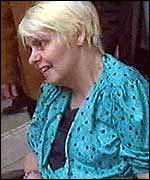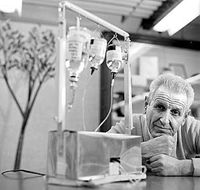
Dianne Pretty
Dianne Pretty was suffering from motor neurone disease and wanted to die. She and her husband petitioned the courts to give immunity from prosecution to her husband if he were to help her to kill herself. He did not get immunity, the disease took its inevitable course, and Dianne Pretty died in hospital under exactly the sort of conditions she had wanted to avoid.
A documentary crew recorded the suffering and loss of dignity that Dianne Pretty endured, and this made her case very well known in England. The court cases, show an interesting range of ethical responses, ending with the statement from the European Courts only weeks before she died that Dianne Pretty did not have the right to die.
The deontological argument about the 'right to die' is not the only position to come out of the courts. An earlier statement said that, though in Dianne Pretty's case her horrific suffering would justify assisting her suicide, to change the law would lead to more harm than good. In other words, a rule utilitarian response was chosen, even though an act utilitarian would disagree.
 Jack Kevorkian (aka Dr Death)
Jack Kevorkian (aka Dr Death)
Kevorkian earned the name 'Dr Death' by photographing the eyes of dying patients. Later in his career (starting in 1987) he began to advertise his services as a physician offering 'death counselling'. When terminally ill patients learned that he was helping people to die, more and more people came to him. Despite several failed court cases, Kevorkian helped over 130 people to die.
Kevorkian believed that helping people was not enough, and actually killed Thomas Youk, filmed himself doing so and showed the film on 60 Minutes. He left the studio in handcuffs, and, defending himself unsuccessfully in court, was sentenced to 10-25 years in prison. In 2006 Kevorkian became terminally ill with Hepatitis C and asked to be pardoned.
Other Case Studies
| Euthanasia Case Studies |

